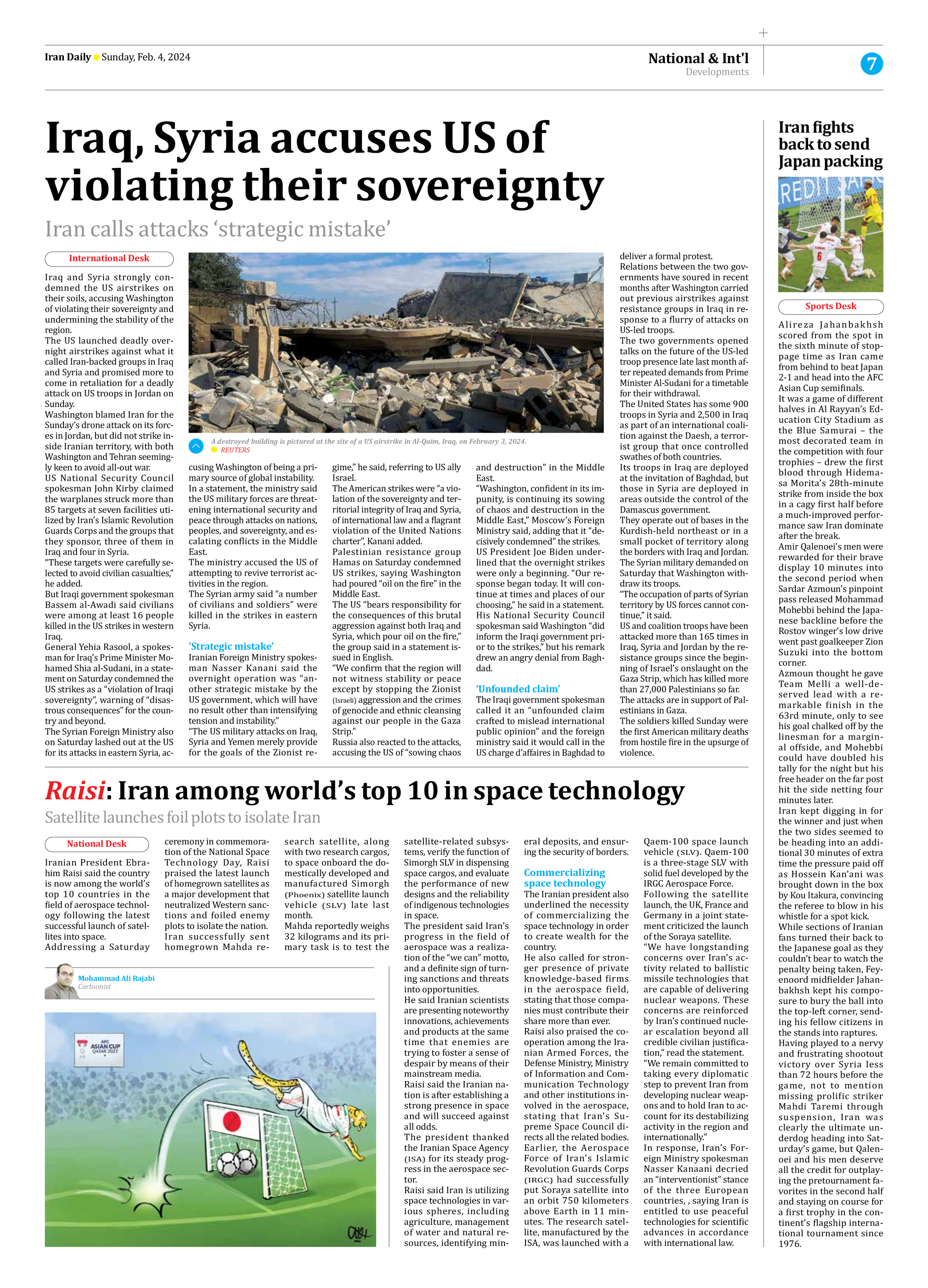
Raisi: Iran among world’s top 10 in space technology
Satellite launches foil plots to isolate Iran
Iranian President Ebrahim Raisi said the country is now among the world’s top 10 countries in the field of aerospace technology following the latest successful launch of satellites into space.
Addressing a Saturday ceremony in commemoration of the National Space Technology Day, Raisi praised the latest launch of homegrown satellites as a major development that neutralized Western sanctions and foiled enemy plots to isolate the nation.
Iran successfully sent homegrown Mahda research satellite, along with two research cargos, to space onboard the domestically developed and manufactured Simorgh (Phoenix) satellite launch vehicle (SLV) late last month.
Mahda reportedly weighs 32 kilograms and its primary task is to test the satellite-related subsystems, verify the function of Simorgh SLV in dispensing space cargos, and evaluate the performance of new designs and the reliability of indigenous technologies in space.
The president said Iran’s progress in the field of aerospace was a realization of the “we can” motto, and a definite sign of turning sanctions and threats into opportunities.
He said Iranian scientists are presenting noteworthy innovations, achievements and products at the same time that enemies are trying to foster a sense of despair by means of their mainstream media.
Raisi said the Iranian nation is after establishing a strong presence in space and will succeed against all odds.
The president thanked the Iranian Space Agency (ISA) for its steady progress in the aerospace sector.
Raisi said Iran is utilizing space technologies in various spheres, including agriculture, management of water and natural resources, identifying mineral deposits, and ensuring the security of borders.
Commercializing space technology
The Iranian president also underlined the necessity of commercializing the space technology in order to create wealth for the country.
He also called for stronger presence of private knowledge-based firms in the aerospace field, stating that those companies must contribute their share more than ever.
Raisi also praised the cooperation among the Iranian Armed Forces, the Defense Ministry, Ministry of Information and Communication Technology and other institutions involved in the aerospace, stating that Iran’s Supreme Space Council directs all the related bodies.
Earlier, the Aerospace Force of Iran’s Islamic Revolution Guards Corps (IRGC) had successfully put Soraya satellite into an orbit 750 kilometers above Earth in 11 minutes. The research satellite, manufactured by the ISA, was launched with a Qaem-100 space launch vehicle (SLV). Qaem-100 is a three-stage SLV with solid fuel developed by the IRGC Aerospace Force.
Following the satellite launch, the UK, France and Germany in a joint statement criticized the launch of the Soraya satellite.
“We have longstanding concerns over Iran’s activity related to ballistic missile technologies that are capable of delivering nuclear weapons. These concerns are reinforced by Iran’s continued nuclear escalation beyond all credible civilian justification,” read the statement.
“We remain committed to taking every diplomatic step to prevent Iran from developing nuclear weapons and to hold Iran to account for its destabilizing activity in the region and internationally.”
In response, Iran’s Foreign Ministry spokesman Nasser Kanaani decried an “interventionist” stance of the three European countries, , saying Iran is entitled to use peaceful technologies for scientific advances in accordance with international law.







